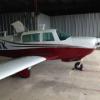Baffling folding back
-
Members Online
- OR75
- good2eat
- amillet
- Captainhog
- philiplane
- Jayrod
- Greg Ellis
- Mellow_Mooney
- da3b242
- TJB35
- toto
- dzeleski
- goodyFAB
- Zippy_Bird
- Echo
- dkkim73
- Jerry 5TJ
- LANCECASPER
- katzhome
- gevertex
- Nanette David
- TCC
- Medflyer
- mooneyflyfast
- N201MKTurbo
- Don Stanley
- Utah20Gflyer
- 00-Negative
- hubcap
- Joseph Long
- Matt_AZ
- Marc B
- Vance Harral
- Fix
- Peter T
- 47U
- Hector
- Steve Dawson
- Rmfriday
- 67 m20F chump


Recommended Posts
Join the conversation
You can post now and register later. If you have an account, sign in now to post with your account.